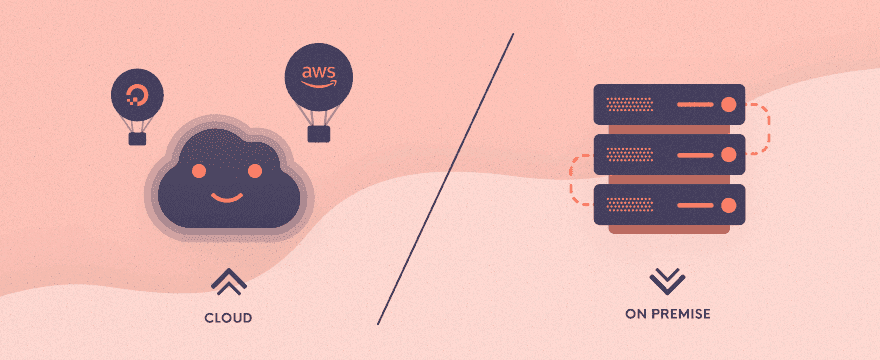Data management primer: cloud, on-prem and everything in between
What are the standard options for data management? It’s either renting a cloud or building your own on-premise. Learn more about its pros and cons.

CTO | Co-Founder of Meiro
What are the common options for data management?
The initial split is pretty simple. It’s either renting a cloud or building your own on-premise. Cloud computing is defined as the on-demand computational power and storage available to multiple users without them needing to actively manage it. Or, to put it more simply: “The servers are somebody else’s problem”. The cloud can be deployed in three common ways - Public cloud, private cloud, and hybrid cloud. As these deployments provide different benefits, there are many factors that a company must consider in order to decide which cloud infrastructure is the right solution for their needs.

Cloud data management options
Amazon Web Services (AWS), Microsoft Azure, and Google Cloud are examples of a public cloud. They are public because they are provided as a shared resource to multiple users and are pay-per-demand. The service may be free, freemium or a subscription-based offering charged based on the computing resources consumed. The computing functionality may range from common services such as email, apps, and storage to the enterprise-grade OS platform or infrastructure environments used for software development and testing.
Pros:
Low costs
There is a lower entry cost as the purchase of hardware and software and setting up and running on-site data centers are not required. Maintenance and updates are also handled by your service provider, removing the need for internal IT departments to administer upgrades.
Outsourcing of security
With public cloud vendors, you automatically get access to security teams and tools that are built to protect the cloud infrastructure.
Scalability
Organizations that are on the public cloud have a few concerns when it comes to choosing to scale up or scale down for service. They can simply request more storage anytime a large request comes in.
Cons:
Data control
Under the SaaS model in mar-tech space, you are usually just renting out the application and in some cases, you don’t even directly hold the raw data and it is stored in some part of the product. When you quit your license, you lose the data access, like in the case of DMPs.
Security
With many SaaS cloud-based applications you have to accept that your data is stored in the same shared space with every other customer they have. Which is fine until it is not.
Vendor dependency
This is a real issue for many businesses that grow too reliant on one vendor and are then subject to the product, policy, and pricing changes which tend to be less than negotiable.
While public cloud is clearly the dominant model there are other two option. First, there is the hybrid cloud. It combines both on-premise and public cloud infrastructure. If you choose to use a hybrid cloud, you can move data and applications between these two deployments. For instance, you can use the public cloud for high-volume, lower-security needs such as web-based email, and the private cloud (or other on-premises infrastructure) for sensitive, business-critical operations like financial reporting.
Private cloud is technically speaking still someone else’s infrastructure you can rent. The difference is that it will be logically separated from other organizations and isolated in a network that will be exclusive to you. A good definition is here.
On-premise
There are many reasons why organizations choose to have the entire IT infrastructure, or at least its critical parts, in their own private data center. In markets like Indonesia, it might be the lack of in-country presence of reliable cloud providers or the need for compliance with specific industry regulations when it comes to customer data management. The clear upside here is control over the data while cost and scalability would be the most obvious downside.
Pros:
- Dedicated and secure
- Compliant
- Full control
Cons:
- High overhead cost
- Not accessible to all users
- Not instantly scalable
Unleash the full potential of your customer data. Let’s talk!
Spread the love:

As nerdy as they come, V holds the R&D fort in Brno. He is about all things data engineering, analytics and data processing technology. When he is not doing that, he is usually obsessing about coffee or motorbikes.


